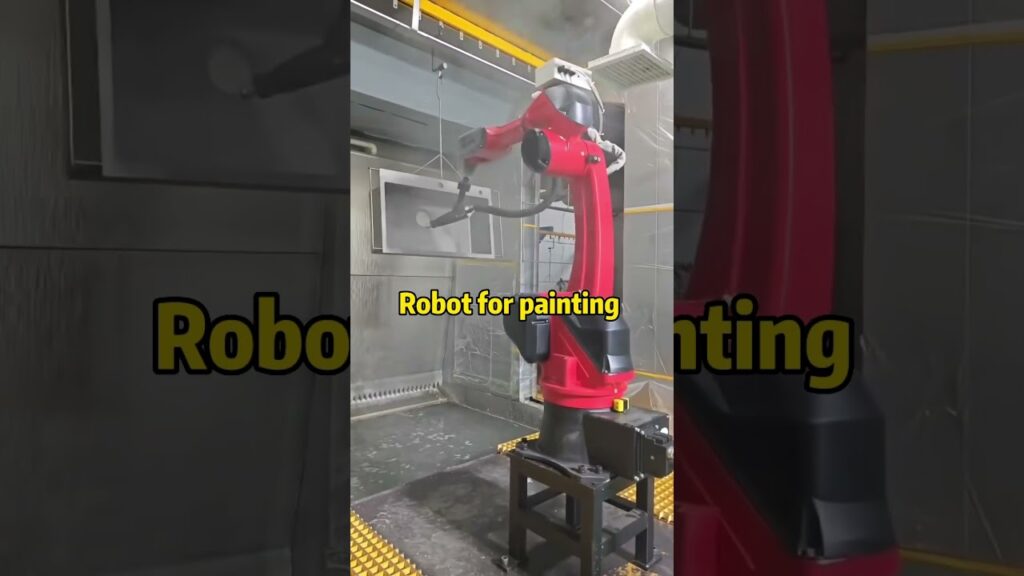Industrial Robots: Revolutionizing Automation in the Manufacturing Industry
Industrial robots have become an indispensable part of the manufacturing industry, revolutionizing the way companies automate their processes. These technologically advanced machines, such as the six-axis robot, industrial robot, and robot arm for painting and spraying, have transformed production lines with their precision, efficiency, and versatility.
In recent years, the demand for industrial robots has witnessed a significant surge, as businesses across various sectors have realized the numerous benefits they offer. These robotic systems have contributed to increased productivity, improved product quality, and enhanced worker safety. Let’s explore the remarkable impact of industrial robots on the manufacturing landscape.
The six-axis robot, also known as the articulated robot, is one of the most common types used in industrial settings. With its six degrees of freedom, these robots can move freely and flexibly, imitating human-like motions. This feature makes them highly suitable for complex tasks that require dexterity and precision, such as assembling intricate components or performing delicate surgeries.
One notable application of the six-axis robot is in the automotive industry. These robots are utilized for tasks ranging from welding and painting to assembly and quality inspection. They have revolutionized the production process, enabling manufacturers to automate repetitive tasks, reduce human error, and ensure consistency in output. As a result, companies have witnessed improved efficiency, reduced costs, and increased overall competitiveness.
Another type of industrial robot that has gained prominence is the robot arm for painting and spraying. Traditionally, these tasks were performed manually, requiring extensive labor and time. With the introduction of robot arms, companies have witnessed a dramatic shift in the painting and spraying processes.
These robot arms are equipped with state-of-the-art technology, including advanced sensors and precision control systems, allowing them to perform these tasks with exceptional accuracy and speed. Not only does this eliminate the risk of human errors, but it also ensures a consistent and uniform finish, enhancing the quality of the final product.
The benefits of industrial robots in manufacturing are not limited to productivity improvements. They also address significant concerns related to worker safety. By automating hazardous or physically demanding tasks, robots reduce the exposure of workers to potentially dangerous environments. This promotes a safer work environment and minimizes the risk of accidents or occupational health issues.
Moreover, industrial robots enhance the overall job satisfaction of workers. By eliminating monotonous and repetitive tasks, employees can be upskilled and assigned to more challenging and creative roles. This not only improves their job satisfaction but also contributes to their professional growth and development.
The integration of industrial robots into the manufacturing industry has not come without challenges. One major concern is the initial investment required to implement these machines. The cost of purchasing, installing, and programming industrial robots can be substantial, particularly for small and medium-sized enterprises. However, with advancements in technology and increasing competition among robot manufacturers, the overall cost of these systems has significantly decreased, making them more accessible to a wider range of businesses.
Another obstacle facing the widespread adoption of industrial robots is the fear of job displacement. Many worry that as these machines become more prevalent, human workers will be replaced, leading to unemployment. However, studies have shown that the introduction of industrial robots often creates new job opportunities. As the efficiency and productivity of manufacturing processes increase, companies are able to expand their operations and generate more employment opportunities.
In conclusion, industrial robots have revolutionized the manufacturing industry, bringing about significant improvements in productivity, product quality, and worker safety. The six-axis robot, industrial robot, and robot arm for painting and spraying have become key players in the automation of various tasks, enabling companies to streamline their operations and gain a competitive edge.
While the initial investment and concerns about job displacement pose challenges, the benefits offered by industrial robots far outweigh the drawbacks. As the technology continues to advance and become more affordable, we can expect to see a greater adoption of these robots across industries. The future of manufacturing is undoubtedly intertwined with the presence of industrial robots, shaping the way we produce and innovate.
Industrial Robot
“Enhancing Paint and Spray Efficiency: Harnessing the Potential of Industrial Robot Arms for Precise and Fast Painting Processes”


